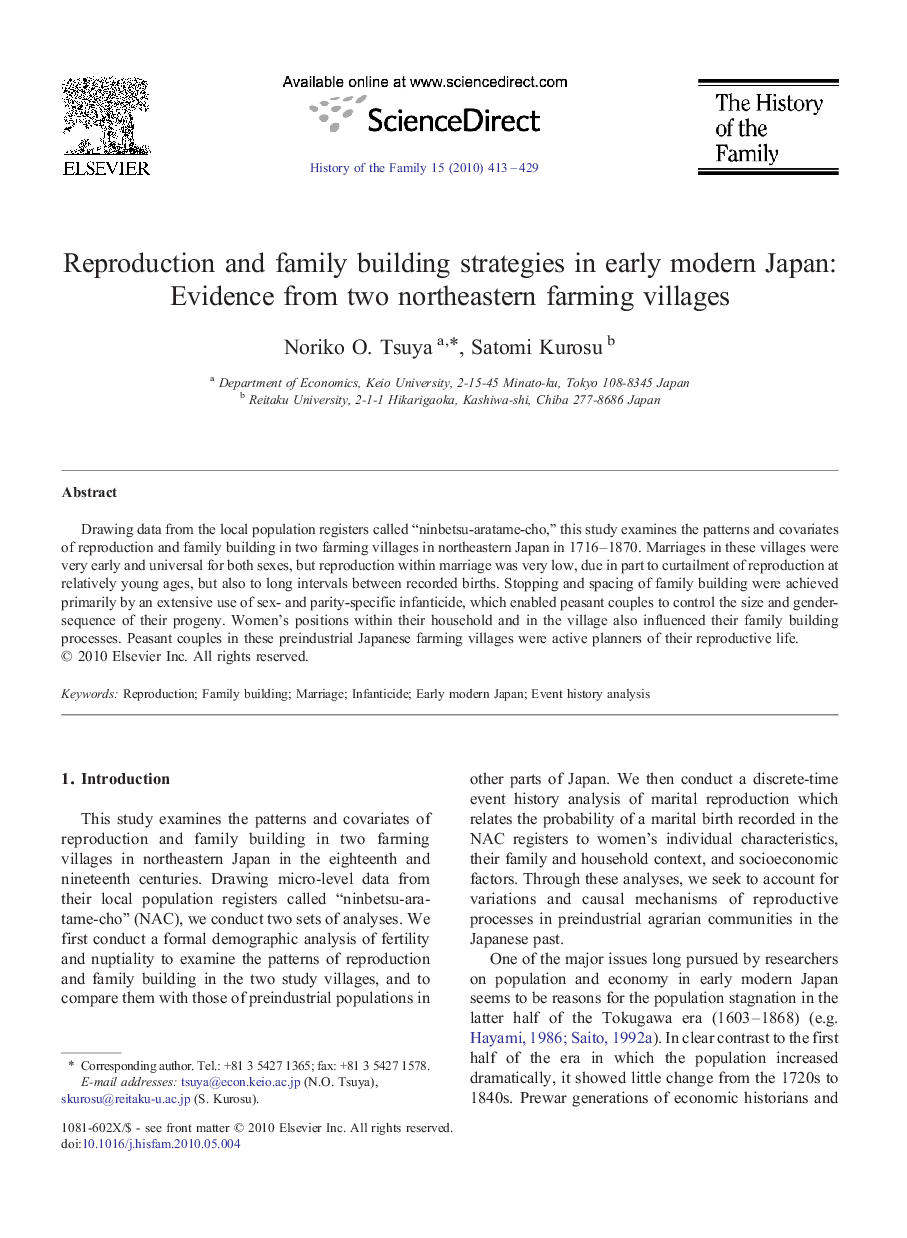| کد مقاله | کد نشریه | سال انتشار | مقاله انگلیسی | نسخه تمام متن |
|---|---|---|---|---|
| 1126937 | 1488640 | 2010 | 17 صفحه PDF | دانلود رایگان |
عنوان انگلیسی مقاله ISI
Reproduction and family building strategies in early modern Japan: Evidence from two northeastern farming villages
دانلود مقاله + سفارش ترجمه
دانلود مقاله ISI انگلیسی
رایگان برای ایرانیان
کلمات کلیدی
موضوعات مرتبط
علوم انسانی و اجتماعی
علوم انسانی و هنر
تاریخ
پیش نمایش صفحه اول مقاله

چکیده انگلیسی
Drawing data from the local population registers called “ninbetsu-aratame-cho," this study examines the patterns and covariates of reproduction and family building in two farming villages in northeastern Japan in 1716-1870. Marriages in these villages were very early and universal for both sexes, but reproduction within marriage was very low, due in part to curtailment of reproduction at relatively young ages, but also to long intervals between recorded births. Stopping and spacing of family building were achieved primarily by an extensive use of sex- and parity-specific infanticide, which enabled peasant couples to control the size and gender-sequence of their progeny. Women's positions within their household and in the village also influenced their family building processes. Peasant couples in these preindustrial Japanese farming villages were active planners of their reproductive life.
ناشر
Database: Elsevier - ScienceDirect (ساینس دایرکت)
Journal: The History of the Family - Volume 15, Issue 4, 29 October 2010, Pages 413-429
Journal: The History of the Family - Volume 15, Issue 4, 29 October 2010, Pages 413-429
نویسندگان
Noriko O. Tsuya, Satomi Kurosu,